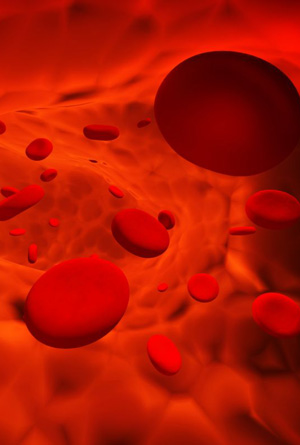The Importance of Iron in the Diet
Getting enough iron is of vital importance to the body. It is essential for the production of the proteins involved in oxygen transport and in the regulation of cell development. An estimated 80% of the world population is iron deficient, according to the World Health Organization, and as many as 30% may have anemia due to iron deficiency. However, it is also important to remember that too much iron intake can be toxic and may result in death.
What Iron Does

Iron is necessary for the production of the red blood cells that deliver oxygen to every one of our body’s other cells. Almost two thirds of the body’s iron is stored in the blood in the form of hemoglobin. Hemoglobin is the part of red blood cells responsible for transporting oxygen to the tissues, so if levels are low then the body does not get sufficient oxygen to function properly. This is why people who are anemic (low in red blood cells) feel tired all the time. Deprived of oxygen, the body has little energy. Low iron levels also compromise the immune system, leaving the person more vulnerable to bacterial infections and viruses.
Two Types of Iron
There are two types of iron: heme iron and non-heme iron. Both are important, although it takes less heme iron to meet your daily iron requirement because it is more easily absorbed by the body. About 25%-30% of heme iron is absorbed, whereas only about 3% of non-heme iron is absorbed. Heme iron is only found in animal products such as meat, poultry and fish. Approximately 60% of the iron found in meat is heme, with 40% non-heme. Non-heme iron can be found in vegetables, particularly dark green leafy vegetables and pulses such as beans and lentils.
Who May Be Iron Deficient?
The body has the ability to store iron, so a deficiency usually does not happen overnight. But if the individual is unable to replenish their stores (such as in periods of famine or illness) then they may develop anemia. Children, the elderly, those with gastrointestinal disorders and women of childbearing age are at greatest risk of iron deficiency. Vegetarians and vegans can be at risk of iron deficiency if they do not eat a variety of vegetables high in iron, however, many popular vegan foods involve the use of iron-rich pulses, soy and fortified cereals. Although one needs to eat more of these to get the required amount of iron, this is usually not a problem, as more of these foods are eaten in place of meat.
Consuming enough iron-rich foods is not necessarily enough to ensure that you do not have an iron deficiency. Problems with absorption can mean that you have an iron deficiency no matter how much iron you are ingesting from the foods you eat. The elderly are at particularly at risk for this problem, as absorption of nutrients tends to become less effective as we get older. A healthy adult will absorb about 10%-15% of the iron he or she ingests.
How to Make the Most of the Iron You Get
To increase the amount of iron absorption, try to simultaneously eat foods that are high in vitamin C. Vitamin C aids in the absorption of non-heme iron. Conversely, there are some foods that hinder non-heme iron absorption; foods high in tannins (such as tea and coffee), calcium, phytates (in legumes and whole grains) and polyphenols can decrease the absorption of iron, as can some proteins in soybeans. Because tea and coffee inhibit iron absorption, they should not be taken with meals.
If your iron needs are not being met by your diet and your doctor finds that you have low levels of iron in your blood, he or she may prescribe an iron supplement. Always consult with your doctor before beginning an iron supplement regimen, as it is possible to take too much, which can lead to severe organ damage. Most men and postmenopausal women are usually not in danger of being iron-deficient. Iron supplements may cause constipation, nausea, vomiting and diarrhea, particularly if taken on an empty stomach. Excess iron, once absorbed, can only be excreted through loss of blood. Those with a condition called hemochromatosis, in which the body stores excessive amounts of iron, must have blood drawn on a regular basis in order to avoid organ damage.
If you have been feeling tired and lethargic, have shortness of breath, and have dry nails and a pale complexion, consult with your doctor to see if you may have iron deficiency anemia. A simple blood test can determine if you are low in iron.







No comments:
Post a Comment